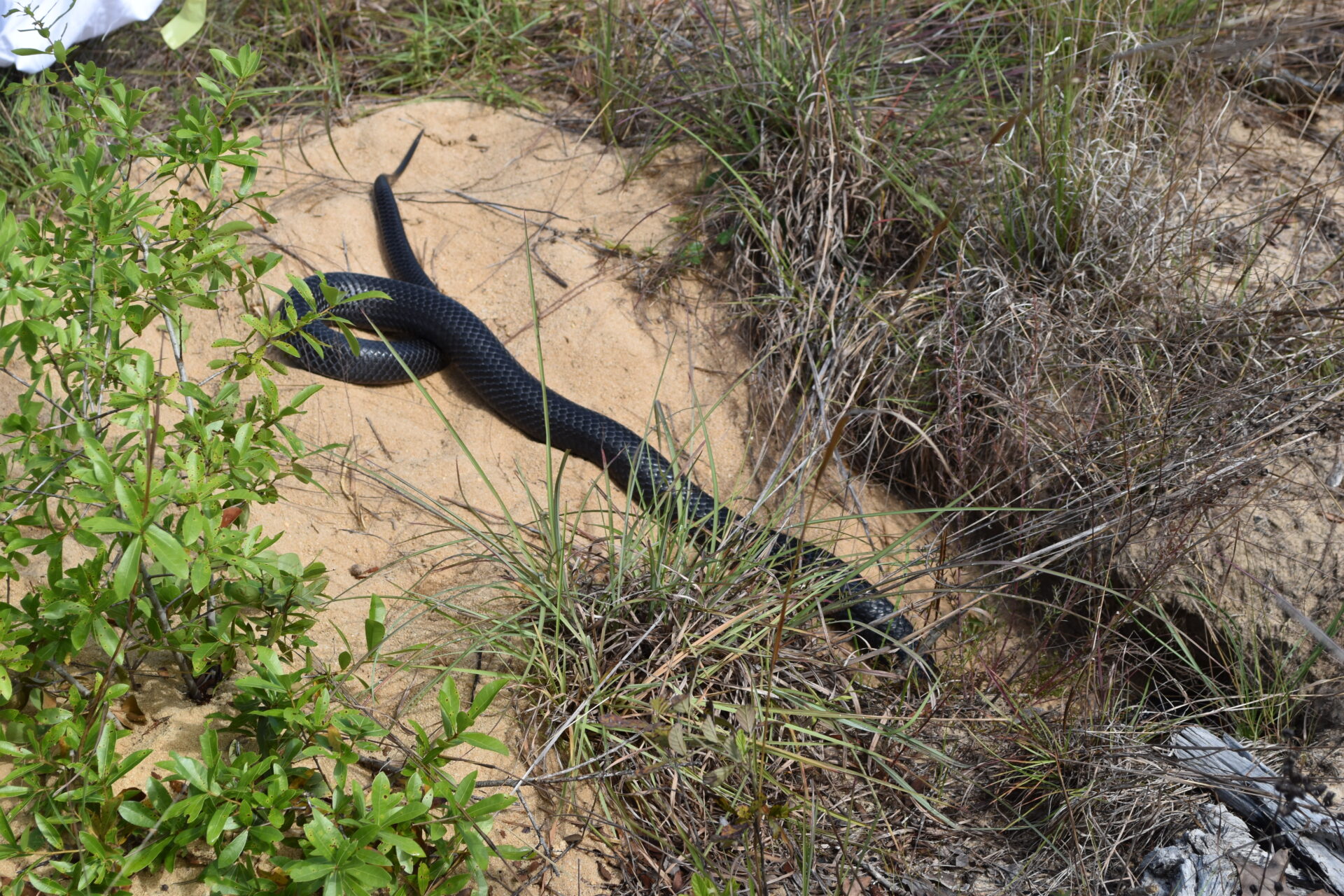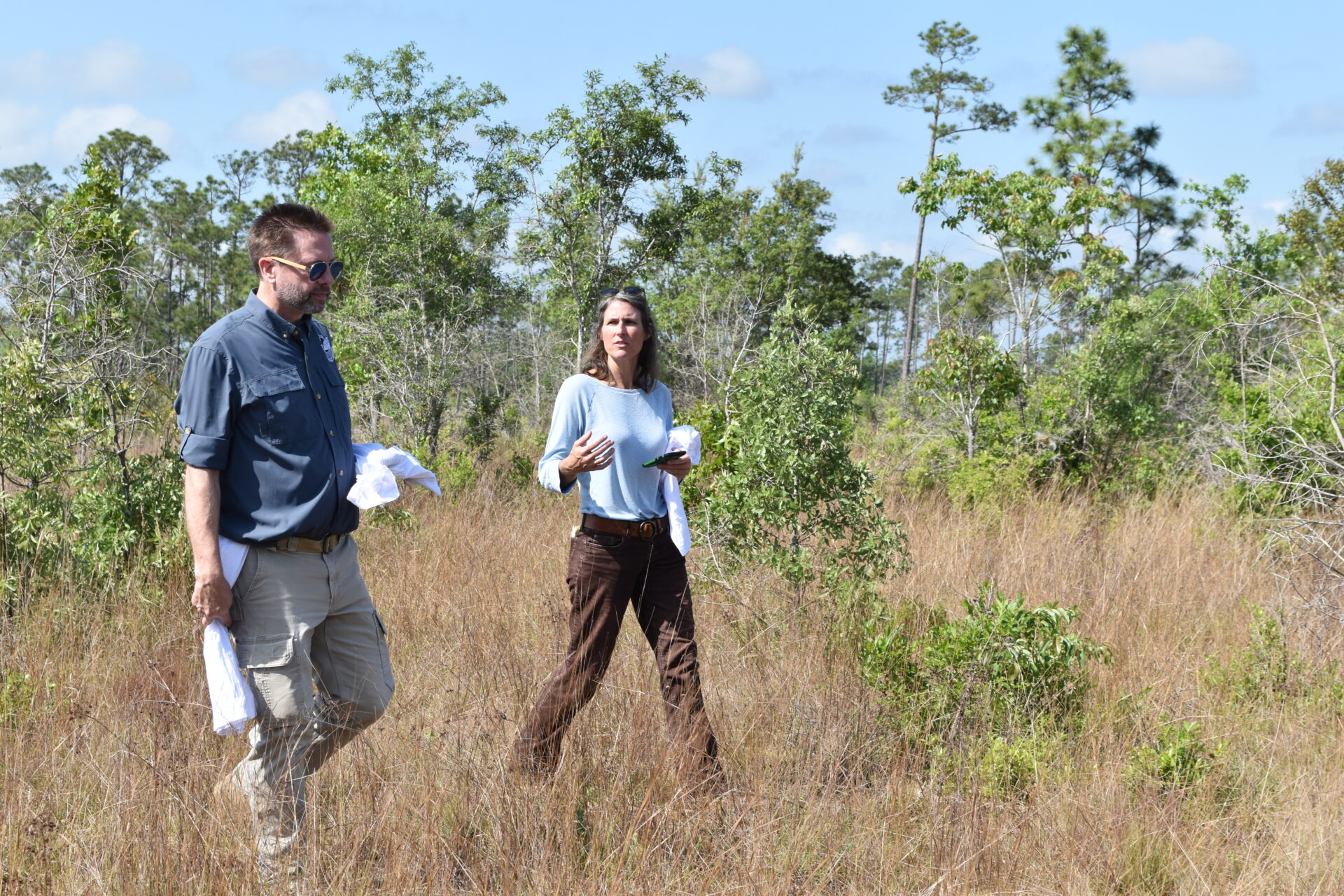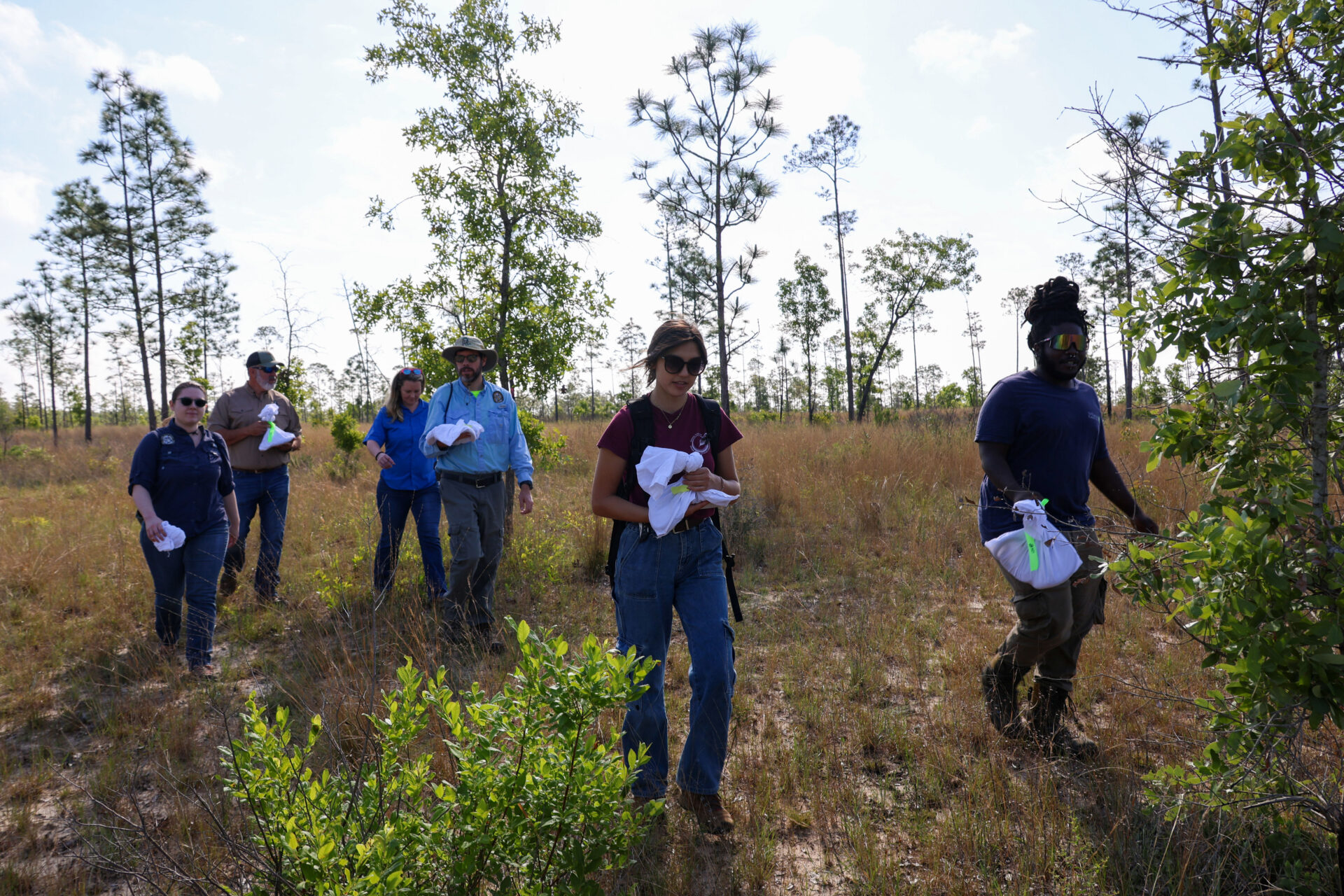Tallahassee, FL (April 30, 2025) – For the ninth consecutive year, The Nature Conservancy (TNC) in Florida, the Central Florida Zoo & Botanical Gardens’ Orianne Center for Indigo Conservation (OCIC) and partners released 42 eastern indigo snakes at TNC’s Apalachicola Bluffs and Ravines Preserve (ABRP).
The collaborative program aims to return the native, non-venomous apex predator to the region by releasing two-year old snakes to the north Florida preserve’s restored sandhill habitats.
The 22 female and 20 male snakes were bred and hatched by the (OCIC) where they spend their first year of life, then raised for an additional year at Welaka National Fish Hatchery.

In total, the program has reintroduced 209 total eastern indigo snakes to ABRP. This year’s batch of released snakes are the most that TNC and partners have released at one time.
During the recently concluded winter-spring survey season, numerous eastern indigo snakes from previous releases have been observed at ABRP, including one female released in 2019 and 19 other individuals released between 2020 and 2024. In late 2024, biologists discovered a male measuring six feet long, a testament to the health and longevity of the snakes released here.
In autumn 2023, the species recovery program achieved a milestone of conservation success with the observation of two wild-born hatchlings discovered onsite—offspring of the previously released snakes.
“The eastern indigo snake reintroduction program continues to make strides towards success,” says OCIC biologist Michelle Hoffman. “With increased monitoring efforts we are able to gather data to better inform the status of the reintroduced animals and how they persist on the landscape.”
Apalachicola Bluffs and Ravines Preserve is the only site in Florida currently designated for eastern indigo snake reintroduction. Chosen for its ideal habitat, this nearly 6,500-acre preserve has undergone extensive longleaf pine and sandhill restoration, and with it, has the food and habitat needed for eastern indigo snake survival. Neighboring Torreya State Park also offers safe harbor for this species, especially with ongoing restoration and land management efforts.

“We are so excited to signs of progress as we enter our ninth year reintroducing this iconic species onto the landscape of Apalachicola Bluffs and Ravines Preserve,” says Dr. James Bogan, Director for the Central Florida Zoo’s Orianne Center for Indigo Conservation. “With this year’s release, we will have reintroduced almost 500 indigos back into the wild between the Florida and Alabama release sites.
Multiple non-profits, government agencies and academic partners have worked together for decades in commitment to the recovery of eastern indigo snakes in North Florida including: The Nature Conservancy (TNC) in Florida, the Central Florida Zoo & Botanical Gardens’ Orianne Center for Indigo Conservation (OCIC), the Florida Fish and Wildlife Conservation Commission (FWC), U.S. Fish and Wildlife Service (USFWS), Welaka National Fish Hatchery, The Orianne Society, Joseph W. Jones Ecological Research Center, Southern Company through the National Fish and Wildlife Foundation (NFWF) and the Fish & Wildlife Foundation of Florida. Together, these partners have worked tirelessly to achieve these crucial conservation milestones.
The success of this program can only be attributed the collaborative efforts of all the partners involved, providing a sound model for other recovering species programs.

Central Florida Zoo’s Orianne Center for Indigo Conservation also releases eastern indigo snakes at Conecuh National Forest in southern Alabama. Eastern indigo snakes were historically found in southern Georgia, Alabama, eastern Mississippi and throughout Florida. Largely eliminated from northern Florida due to habitat loss and fragmentation, eastern indigo snakes were last observed at ABRP in 1982, until the species recovery effort began in 2017.
The eastern indigo snake (Drymarchon couperi) is the longest snake native to North America and an iconic and essential component of the now rare southern longleaf pine ecosystem. The species serves a critical function to balance the wildlife community by consuming a variety of small animals including both venomous and non-venomous snakes. Reaching lengths over eight feet long, eastern indigo snakes living in the northern part of their range often rely on gopher tortoise burrows for shelter during cold weather.
The eastern indigo snake reintroduction efforts are supported by grants, such as a Recovery Challenge Grant via the U.S. Fish and Wildlife Service, a Competitive State Wildlife Grant via the Florida Fish and Wildlife Conservation Commission, and a Conserve Wildlife Tag Grant from the Fish & Wildlife Foundation of Florida, funded through purchase of Conserve Wildlife Florida license plates and designated for conservation of non-game species and the habitats that support them. Additional funding to support the reintroduction has been provided by Southern Company.
Photos and video content provided by The Nature Conservancy in Florida and Florida Fish & Wildlife Conservation Committee.